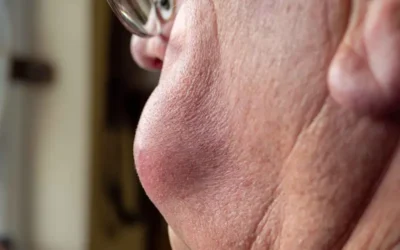The 2020 CPT code updates by the American Medical Association (AMA) include 394 code changes, including 248 codes, 7 deletions and 75 revisions. Cardiology has 26 new codes and 11 deleted codes. Cardiology medical billing is a challenging process that requires staying up to date with yearly code changes. Outsourcing the task to an expert can ensure accurate and compliant coding and billing to ensure that money is not left on the table.
- Pacemaker Removal: Code 33275, leadless pacemaker removal, was revised to include imaging guidance
33275 Transcatheter removal of permanent leadless pacemaker, right ventricular, including imaging guidance (Eg. fluroscopy, venous ultrasound, ventriculography, femoral venography), when performed
- Pericardiocenteisis: There are 4 new codes for pericardiocenteisis (33016, 33017, 33018, 33019) that take age into account as well as whether or not the patient has congenital cardiac anomaly. New code 33016 for pericardiocentesis includes imaging guidance when performed. Code 33010 has been deleted.
Deleted: Code 33010 – pericardiocenteisis; inital
New codes
33016 Pericardiocentesis, including imaging guidance when performed
New codes 33017, 33018, and 33019 are related to services in the pericardium. These codes imply that in order to report pericardial drainage with insertion of an indwelling catheter, the catheter needs to remain in place when the procedure is completed.
33017 pericardial drainage with insertion of indwelling catheter, percutaneous, including fluoroscopy and/or ultrasound guidance, when performed; 6 years and older without congenital cardiac anomaly
33018 including fluoroscopy and/or ultrasound guidance, when performed; birth through 5 yrs of age or any age with congenital cardiac anomaly
33019 pericardial drainage with insertion of indwelling catheter, percutaneous, including CT guidance
There are several new parenthetical notes on the use of these codes. The notes state that these codes cannot be reported in addition to many radiological codes that already include the service. For eg, code 75989 (radiological guidance – fluroscopy, ultrasound or computed tomography) for percutaneous drainage (e.g., abscess, specimen collection) cannot be reported with placement of catheter, radiological supervision and interpretation) in addition to 33017, 33018 or 33019.
- Endovascular Repair of Iliac Artery: Endovascular repair has evolved as an alternative to surgical repair and may be a useful option for patients at high surgical risk. There are 2 new codes for iliac branched endograft (IBE) – 34717 and 34718. 34717 is an add-on code for repair at time of aorto-iliac endograft.
34717+ Endovascular repair of iliac artery at the time of aorto-iliac artery endograft placement by deployment of an iliac branched endograft including pre-procedure sizing and device selection
34718 Endovascular repair of iliac artery, not associated with placement of an aorto-iliac artery endograft at the same session, by deployment of an iliac branched endograft, including pre-procedure sizing and device selection
- Ascending Aorta Graft: This procedure involves excision of the ascending aorta and underside of the aortic arch, and placement of a thoracic aortic stent graft into the descending aorta at the time of the arch repair (www.emoryhealthcare.com). There are 2 new codes for ascending aorta graft and one new code for transverse aortic arch graft
33858 Ascending aorta graft, with cardiopulmonary bypass, includes valve suspension, when performed, for aortic dissection
33859 Ascending aorta graft, with cardiopulmonary bypass, includes valve suspension, when performed, for aortic disease other than dissection (e.g., aneurysm)
33871 transverse aortic arch graft, with cardiopulmonary bypass, with profound hypothermia, total circulatory arrest and isolated cerebral perfusion with reimplantation of arch vessel(s) (eg, island pedicle or individual arch vessel reimplantation
- Exploration of Artery
Changes have been made to the artery exploration set of codes. Code 35701 was revised and 2 new codes 35702 and 35703 were added, and three codes (35721, 35741 35761) were deleted.
Revised: 35701 Exploration not followed by surgical repair, artery; neck (leg, carotid, cubclavian)
New
35702 Upper extremity (eg, axillary, brachial, radial, ulnar)
35703 Lower extremity (eg, common femoral, deep femoral, superficial femora, popliteal, tibial, peroneal
The American College of Surgeons draws attention to the following points on the use of the new codes for exploration of artery:
- Previously, the code descriptors for exploration of artery had included “with or without lysis of artery”. As lysis of artery is rarely done during exploration, this language has been removed from the code descriptors in 2020.
- When artery exploration is performed on the same side of the neck as blood vessel repair, exploration of postop hamorrhage, thrombosis, or infection; or flap or graft procedures in the neck, code 35701 may not be reported separately.
- When artery exploration is performed on the same extremity as blood vessel repair, code 35702 or 35703 may not be reported separately.
- Codes 35701, 35702 and 35703 may be reported only once with a surgical procedure performed by the same surgeon if the other procedure is a nonvascular surgical procedure and the artery exploration is performed thru a separate incision.
Other new codes for cardiology include:
- 78429 Myocardial imaging, positron emission tomography (PET), metabolic evaluation study (including ventricular wall motion(s) and/or ejection fraction(s), when performed, single study; with concurrently acquired computed tomography transmission scan
- 78430 Perfusion study (including ventricular and motion(s) and/or ejection fraction (s), when performed), single study, at rest or stress (exercise or pharmacologic), with concurrently acquired computed tomography transmission scan
- 78432 Myocardial imaging, positron emission tomography (PET), combined perfusion with metabolic evaluation study (including ventricular wall motion(s) and/or ejection fraction(s), when performed), dual radiotracer (eg myocardial viability)
- 78433 Myocardial imaging, positron emission tomography (PET), combined perfusion with metabolic evaluation study (including ventricular wall motion(s) and/or ejection fraction(s), when performed), dual radiotracer (eg myocardial viability) with concurrently acquired computed tomography transmission scan
- 78434+ Absolute quantitation of myocardial blood flow (AQMBF), positron emission tomography (PET), rest and pharmacologic stress (list separately in addition to code for primary procedure)
- 93356+ Myocardial strain imaging using speckle tracking-derived assessment of myocardial mechanics (list separately in addition to codes for echocardiography imaging)
It can be a real challenge for busy cardiology practices to stay current with all the updates each year. Cardiology physician billing services can ease the task and help providers ensure accurate and compliant coding to prevent denials and optimize reimbursement.




